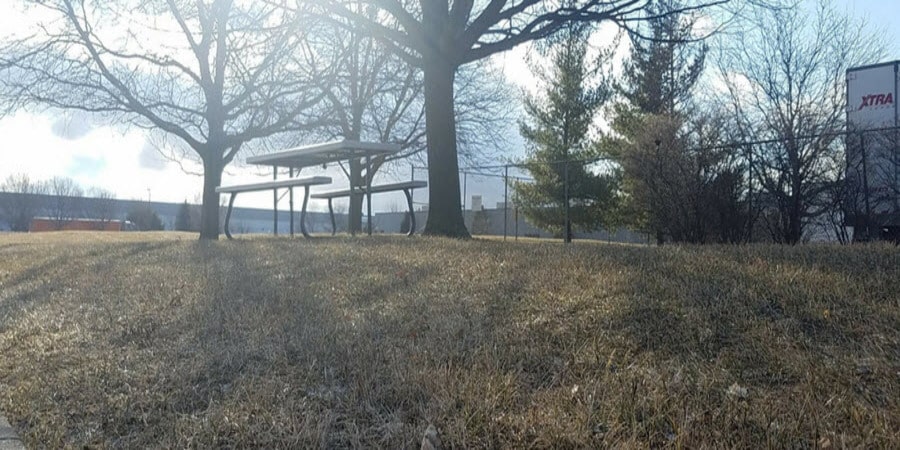Spring Lawn Pre-Emergent Herbicide
- "The Lawn Care Nut"March 10, 2018
Hey there lawn lovers, hope you had a very short winter! Down here in Florida, I’ve been in the throws of spring heat for several weeks already so my season is in full swing and I’m mowing weekly already, soon to kick it into twice weekly if I decide to get super nutty!
One thing’s for sure though, no matter what time your growing season starts, you want to consider pre-emergent herbicide applications to keep invaders like crabgrass, poa annua (annual bluegrass) and foxtail out of your yard.
I’ve got a free pre-emergent guide that gives you step-by-step instructions on what to buy (granular or liquid as well as active ingredient) and when to apply. It’s laid out for both cool season (Fescue, Bluegrass, Rye) and warm season (St Augustine, Bermuda, Zoysia and Centipede) lawns. Along with that come many questions, and here are the 3 most common, along with answers:
3 Common Questions
1 ) Allyn, when is the best time to apply pre-emergents for optimum results in early spring?
Soil temperatures matter. Crabgrass seeds can start germinating when soil temps surrounding them reach 55F. Depending where you live, you are probably getting closer than you think. Here is a good soil temperature website for the Great Lakes Region. It actually gives you approximate application windows.
Screenshot from: http://www.gddtracker.net/
Of course, the very best way to know your actual soil temperature is to get a soil thermometer. These can be picked up at any garden center or online for cheap. I say this is the “best” method and really what I mean is, it’s the most accurate. Keep in mind that your lawn has “hot zones” where the soil heats up quicker. Think about areas right around your sidewalks and other concrete surfaces: these absorb heat and stay warmer. That’s why crabgrass “breakthrough” almost always happens along those edges. If you use a bladed lawn edger (because sharp edges dominate!) during the season, it can make the problem even worse!
There are other considerations here too: areas that are shaded for part of the day by structure or vegetation will stay cooler longer at various soil depths, extending the window in these areas.

"The sun peaks out in Naperville, IL... where soil temperatures are still hovering in the low 30s" - Photo taken March 7, 2018 by Allyn Hane
2 ) Allyn, I applied my pre-emergent and it rained *really hard* right after, did this wash it all away?
This is a tough question to answer. Your intuition tells you that a hard downpour has washed all of your hard work down the storm drains and left you vulnerable. The reality is however, that a properly applied application, whether liquid or granular, will stick quite well once it’s worked its way down into the soil. For many years when I worked on lawns in the Chicago suburbs, I saw thousands of pre-emergent applications going down at all times of the day, week and season. I very rarely saw major pre-emergent failure, even in same-day downpours, which are inevitably going to happen. Most times, if we did see pre-emergent failure, it was because of applicator error or extreme abnormal conditions such as drought.
The other thing to consider here: these are herbicides and they have labeled application rates for a reason. Over-applying can cause damage to turfgrass, soil organisms and yes, TOO much can run off into the streets and storm drains. I would never want you to take a chance on over-application. Never.
So what can be done? Fear not young lawn care nut, we have redundancy built into the program! If your lawn has had issues with crabgrass or poa annua in the past, it’s always advisable to apply a second application of pre-emergent in very early summer or late spring, as well as another in early fall/late summer. Just be sure you are staying within label guidelines on the products you choose! Reading the label matters!
3 ) “Allyn, I got my first application of pre-emergent down right on time but I’m still seeing weeds, what gives?”
Three possible answers here (I know, this blog post is getting long! Hope you packed your lunch.)
- You did not get it watered in properly. Almost every pre-emergent label will tell you the product needs ½” of water to get into the soil effectiveness zone (I made up that term but you understood it I’m sure). Depending on your setup, it could take you quite a while to move sprinklers around to get that done. Let’s hope you get some rain help! Just not a downpour right?
- Read the label - see what weeds and grasses are prevented? I bet the stuff you see in your lawn ain’t those. Prodiamine, for example, won’t prevent dandelions, clover or thistle.
- Winter Annuals - I know, I know, I sold you on the fact that being “early” meant spring. “Early” actually means getting that early fall application down. Weeds like Poa Annua and Henbit germinate in fall, chill during winter, and rage in early early spring. Your waiting on the 45-50 degree soil temp to hit in spring is just a little too late.
Lastly, if you have started mowing, feel free to throw down a full dose of Milorganite right on top of your pre-emergent. Yep, no worries there. The two will not interact with one another. Just be sure that you keep the applications separate. Don’t mix the two products together in a hopper, that will throw off the rates of both.
With that, I hope you all have a successful spring and your lawn dominates from the start
I’ll see YOU, in the lawn!

